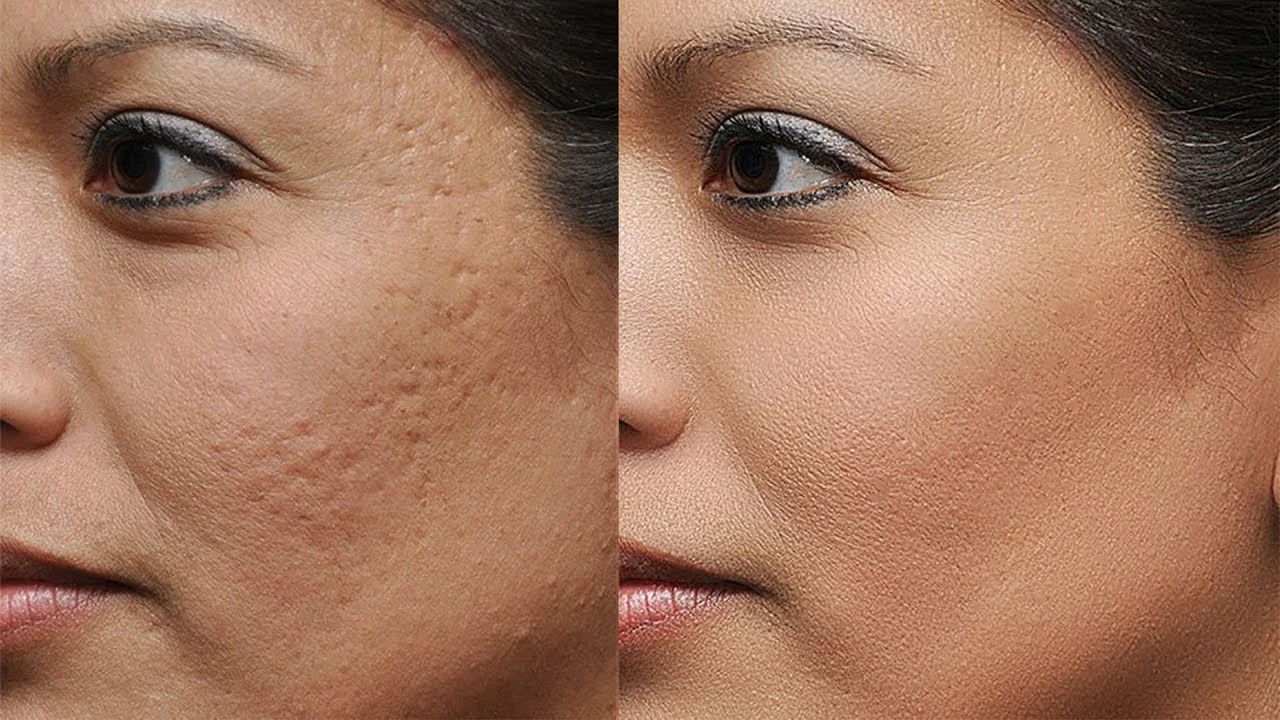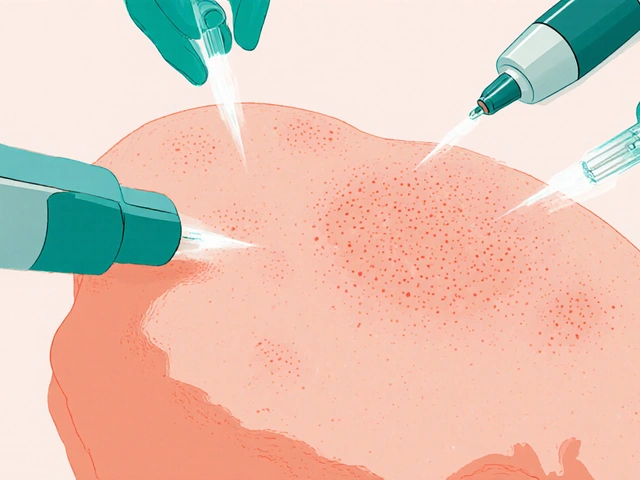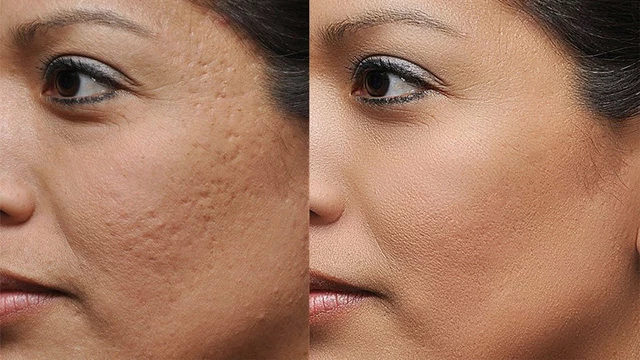Understanding Acne Scars and Their Impact on Skin Texture
Acne scars are a common skin issue that many people face. They can cause an uneven skin texture, making it difficult for some individuals to feel confident in their appearance. In this article, we will discuss how acne scars form, the impact they have on the skin's texture, and how tazarotene can help improve the appearance of acne scars.
Acne scars develop as a result of inflammation caused by acne, leading to a breakdown of collagen in the skin. When the inflammation subsides, the skin attempts to repair itself by producing new collagen fibers. However, this process can sometimes result in an uneven distribution of collagen, leading to the formation of scars. Scars can be either raised or depressed, depending on the collagen production and distribution.
Uneven skin texture is a common concern among people with acne scars. The raised or depressed nature of scars can disrupt the smoothness of the skin's surface, making it appear bumpy or indented. This can make it challenging for individuals to find makeup products that sit well on their skin or feel comfortable in their own skin. Thankfully, there are treatment options available that can help improve the appearance of acne scars and restore a smoother skin texture.
Tazarotene: An Effective Retinoid for Acne Scar Treatment
Tazarotene is a synthetic retinoid that is commonly used in the treatment of various skin conditions, including acne and psoriasis. It works by encouraging cell turnover, which helps to exfoliate the skin and promote the production of new, healthy skin cells. This process can lead to an improved skin texture and a reduction in the appearance of acne scars.
Studies have shown that tazarotene is an effective treatment option for acne scars. It has been found to not only improve the skin's texture by reducing the depth and size of scars but also to help fade the discoloration associated with acne scars. The use of tazarotene can lead to a smoother, more even complexion, helping individuals feel more confident in their appearance.
How to Use Tazarotene for Acne Scars
When using tazarotene to treat acne scars, it's essential to follow the directions provided by your dermatologist or the product's packaging. Generally, tazarotene is available in the form of a cream, gel, or foam and should be applied topically to the affected areas of the skin.
Before applying tazarotene, cleanse your skin gently and pat it dry. Then, apply a thin layer of the product to the affected areas, avoiding the eyes, mouth, and any open wounds. It's important to note that tazarotene can cause skin irritation, so it's crucial to start with a lower concentration and gradually increase the strength as your skin adjusts to the treatment.
It's also essential to be patient when using tazarotene for acne scars, as improvements in the skin's texture may not be noticeable right away. It can take several weeks or even months of consistent use for the full benefits of tazarotene to become apparent. To achieve the best results, be sure to use the product as directed and maintain a consistent skincare routine.
Side Effects and Precautions
As with any skincare product, there are potential side effects to be aware of when using tazarotene. Some of the most common side effects include skin irritation, redness, itching, and peeling. These side effects tend to be mild and often subside as the skin adjusts to the treatment. However, if you experience severe or persistent side effects, it's important to consult with your dermatologist for guidance.
Tazarotene can also make your skin more sensitive to the sun, increasing the risk of sunburn. To protect your skin, it's essential to wear sunscreen with an SPF of at least 30 and avoid excessive sun exposure while using this treatment. Additionally, pregnant or breastfeeding individuals should avoid using tazarotene, as it can cause fetal harm.
Combining Tazarotene with Other Acne Scar Treatments
While tazarotene can be an effective treatment for acne scars on its own, combining it with other treatments may enhance its efficacy. Some potential complementary treatments include chemical peels, microneedling, and laser therapy. These treatments can work alongside tazarotene to further improve the skin's texture and reduce the appearance of scars.
Before combining tazarotene with other acne scar treatments, it's important to consult with a dermatologist. They can provide guidance on the best treatment plan for your specific skin concerns and ensure that you're using the most effective combination of treatments for your individual needs.
In conclusion, tazarotene is a promising treatment option for those looking to improve the texture of their skin and reduce the appearance of acne scars. With consistent use, patience, and potentially combining it with other treatments, tazarotene can help restore a smoother, more even complexion and boost your confidence in your skin.




Leo Lee
May 22, 2023 at 02:39Tazarotene? Please. I've been using it for 8 months straight and my scars look like someone sandblasted my face with a toothbrush. You think it's magic? It's not. It's a chemical warzone. I cried in the shower for three weeks straight. But yeah, it worked. My skin's smoother now, but I look like a lizard who survived a nuclear blast. Worth it? Maybe. Would I do it again? Only if I hated my reflection more than I hated pain.
Isabel Piaggi
May 22, 2023 at 04:39tazarotene changed my life but like... i didnt know how harsh it was gonna be?? my skin peeled like a snake and i thought i was dying?? but now?? my scars are way less deep and i dont hide in hoodies anymore?? 🥲✨ also use sunscreen like your face depends on it because it does lol
Tom McInnes
May 23, 2023 at 00:47Effective, but not without significant drawbacks. Dermatological supervision is essential. Sun protection non-negotiable. Patience required. Results manifest over months, not weeks.
Stephanie Cepero
May 23, 2023 at 03:39I'm so glad someone mentioned the sun sensitivity-I almost forgot and got a brutal sunburn after two weeks of use. It's scary how quickly your skin becomes vulnerable. I also want to say: if you're feeling discouraged because you don't see results yet, please don't give up. It took me 14 weeks to even notice a difference, and now I catch myself smiling in the mirror. You're not alone in this. It's hard, but it's worth the grind.
Michael Tribone
May 23, 2023 at 22:43Hey everyone, just wanted to say you're all doing amazing just by being here and trying to improve your skin. Tazarotene isn't for everyone, and that's totally fine-but if it's working for you, that's HUGE. I started with the 0.05% gel, used it twice a week, and slowly built up. My skin still gets dry as heck, but I use a ceramide cream after and now I can actually wear foundation without it looking like a mask. You got this. Keep going. And if you're struggling, DM me-I'll send you my favorite cheap moisturizer link. We're in this together 💪✨
Nancy Lowry
May 24, 2023 at 13:17Of course it works. Everyone who doesn't see results either didn't use it long enough, didn't use enough product, or didn't avoid the sun. You're not special. You're not immune. You just didn't follow instructions. Tazarotene is a proven, FDA-approved retinoid-not some trendy TikTok gimmick. If your skin is irritated, you're probably using it with a toner full of alcohol or applying it to damp skin. Stop blaming the product. Fix your routine. And stop posting emotional rants like you're the first person to ever have acne scars. Get a dermatologist. Use the cream. Wear SPF 50. Done.